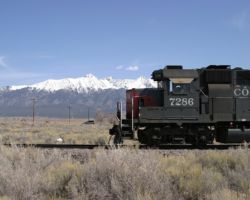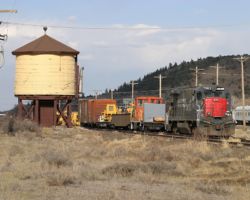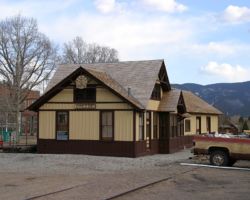The rumor that Union Pacific is looking to get rid of the Alamosa lines is certainly no secret – the rumor’s been going around for years. However, in recent months, the rumor has turned into the near-fact that RailAmerica will be purchasing everything west of Walsenburg, CO, in the very near future. May 1 is being kicked around as the sale date, but so far there’s no concrete evidence to support this. No STB filings, no press releases, no anything, nada, zilch, zero. So we wait and see, but in the mean time I figured it was high time I get back to the San Luis. My last trip was in January 2002, and with at least two Grandes being regulars on the runs, I thought it was time I go back for what might be my last look at Grandes in the SLV.
Since MPUAA (the Pueblo-Alamosa Manifest) typically arrives in the early morning (0600h or better), the smartest thing to do is drive down the night before for those like me that live three hours away. So I stayed in Alamosa on Thursday night, and was rattled out of bed by my alarm at 0500h on Firday. In hindsight, I should have stayed in Fort Garland, as then I’d be right where I wanted to be in the early morning hours – on the east end of the valley.
That said, MPUAA suffered some great malady (other than the plethora of slow orders now covering the Veta Pass area) on the trip up from Pueblo on Friday morning. I awoke at 0500h, immediately turned on the scanner, and heard nothing but silence. Forty-five minutes later, after checking out at the Super 8 (and grabbing two donuts for my breakfast and six batteries for the scanner’s breakfast), I headed out east, expecting to see the power rumbling around the yard building the two locals. However, as I pulled across the tracks, there were no signs of MPUAA, nor any radio traffic. Very odd – I’d never seen one that late.
After driving east along the line, following it as closely as possible (on a little dirt road paralleling the tracks, called 124 between El Rancho Lane and the 45 road near Blanca), I stopped for something to drink at Fort Garland. While I hadn’t seen it, I was quite concerned that it was indeed in the yard, and that I hadn’t seen it. Still, it was only marginally over 20 miles back to Alamosa, and I hadn’t heard even a crackle from the radio. Perhaps it really was this late?
I wound up sitting in a large gravel pullout near where US 160 and the railway diverge (think Forbes Park) for nearly four hours awaiting MPUAA’s arrival. The only thing I’d heard were some unintelligable voices on the San Luis Central’s frequency. I’d almost given up any hope it was still out there when I heard a FRED blip on the scanner. Shortly after came another, then another blip, and then the crew toning up the DS and informing her of their ETA into Alamosa. They also mentioned that the return trip couldn’t possibly be any worse, but didn’t elaborate on what went wrong, since presumably the DS already knew. Just before 1000h, the train pulled through Fort Garland.
Arrival time at Alamosa was 1100h, and the first local crew was already there awaiting their arrival. The MPUAA crew went for some well-deserved rest, while the South Local (LDP53) crew went on duty breaking down the train and reassembling the two locals. Knowing they usually take at least an hour to rebuild the trains, I decided to head west to the SLC at Monte Vista in hopes that the radio crackling from earlier indicated they had a train out running. Despite driving clear up to Center, CO (the end of the SLC) from Monte Vista (the other end), I didn’t see a single thing moving, just a few guys in the shop. The only thing I did get was a big potato in the windshield, courtesy of a farm truck in front of me. Fortunately I needed a new windshield anyway, so no real harm done.
Upon arriving back at Alamosa, the South Local was assembled and ready to go at the depot. A few minutes later and we were all off southbound with SSW 7286 in the lead, followed by DRGW 3128. It took about an hour for the local to reach Antonito while I stopped and shot it every few miles, about another hour to switch, an hour for lunch at some local eatery (I wasn’t watching which one. I took a nap instead.), and then an hour and some back to Alamosa. Twenty-four empties into Antonito, four loads of red volcanic scoria and four loads of perlite out.
Back in Alamosa, the West Local had run over to the Monte Vista interchange with the SLC (only about ten miles) with DRGW 3121 rather than one of the SP units I expected. After kicking myself for napping rather than driving, I did get a few shots of it west of the yard and then passing through the depot. It’s a rather odd sight to see two locals, following right behind each other, coming through Alamosa. Since the yard isn’t that accessible (or at least I’ve never figured it out), I headed west to use the last three hours of light to check out the western end of the valley.
I hadn’t been out to South Fork since my very first railfanning trip to the San Luis back in October 2000. Shortly after that trip, the sawmill closed and there was no longer a regular need for rail service west beyond Monte Vista. However, in late 2000, the Denver & Rio Grande Railway Historical Foundation (note: not the same as the Rio Grande Modeling and Historical Society) acquired the former D&RGW Creede Branch. Recently, equipment had been moved to South Fork for use on the new railway when they get it up and running. Also, I’d never been out on the Creede Branch, so I decided it was high time to go see it all.
The Creede Branch is certainly scenic, even if it is in bad shape. The track is all intact, but has issues. The DRGRHF has done a great deal of work clearing trees, rocks, and brush, but there’s still a good number of broken rails and spots where the roadbed has been undermined by erosion. There’s a great deal of work yet to be done, but I wish them all the best – it would be a terrific section of line to ride again. Upon reaching the end of the line at Creede, the light was almost gone. I turned around, grabbed a few more photos of the line condition on the way back to South Fork, and then headed for home.
When (and if) RailAmerica takes over with their San Luis Rio Grande railroad, I’ll be back to the valley to photograph it as well, and you can be sure there will be another trip report on it. However, under RA management, there’s no assurance that the western end of the SLV lines will stay intact – there’s simply no business in South Fork to serve. The Antonito line is a sure bet, as it generates a great deal of traffic, as is the western line as far as the SLC connection at Monte Vista. Beyond that, who knows? If you’re contemplating a trip any time soon, now’s the time to do it. Don’t delay – the Rio Grandes that have held steady positions on the the SLV jobs for the past decades may soon be gone as UP calls it quits in the valley for good.
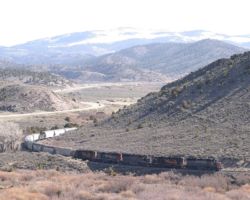
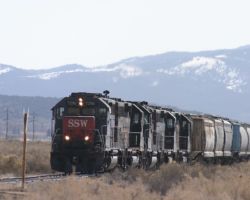
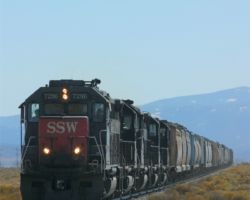
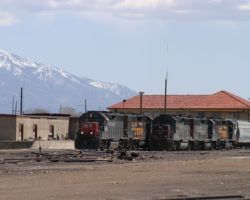
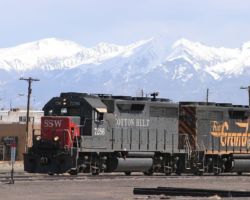
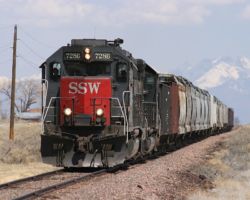
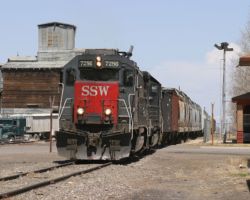
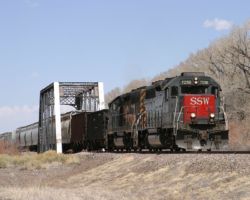
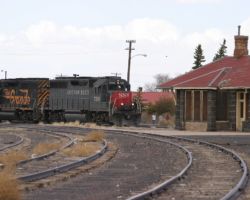
![After completing their switching, the crew parks the short train of eight loads (perlite in the covered center-flo cars, volcanic scoria [think red rock] in the open hoppers) across from where they're headed for beans. In the meantime, for me it's time for a nap.](https://www.ndholmes.com/wp-content/uploads/cache/2020/04/011-drgw-3128-antonito_co-11-apr-2003-000-960x640-1/1869493983.jpg)
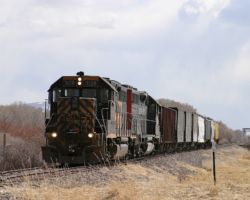
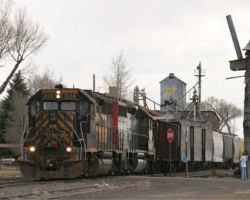
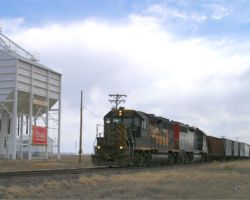
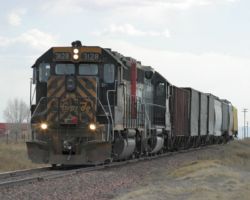
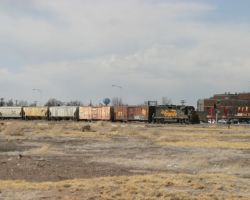
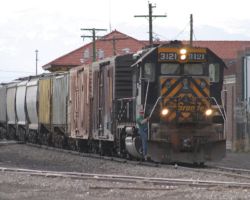
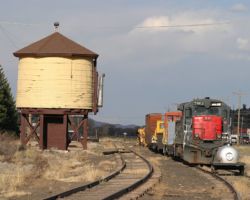
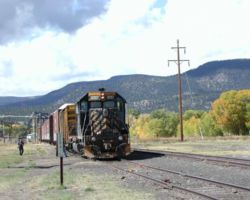
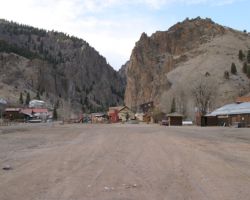
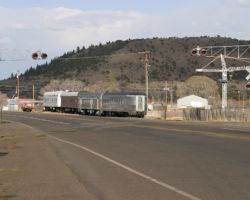
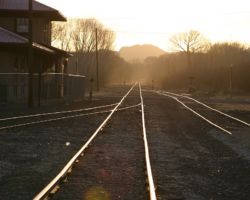
All shots in this trip report were taken with a Canon EOS 10D with either a Canon 28-105mm f3.5-4.5/USM or a Canon 75-300mm f4-5.3 IS/USM.
This work is copyright 2024 by Nathan D. Holmes, but all text and images are licensed and reusable under a Creative Commons Attribution-NonCommercial-ShareAlike license. Basically you’re welcome to use any of this as long as it’s not for commercial purposes, you credit me as the source, and you share any derivative works under the same license. I’d encourage others to consider similar licenses for their works.
